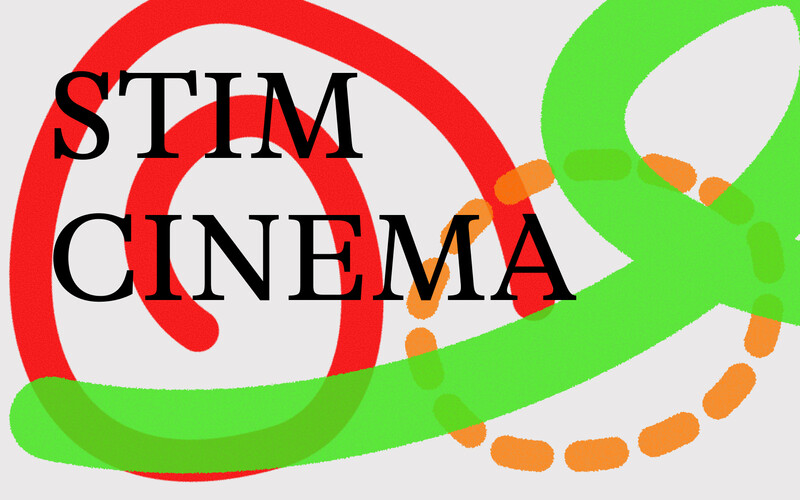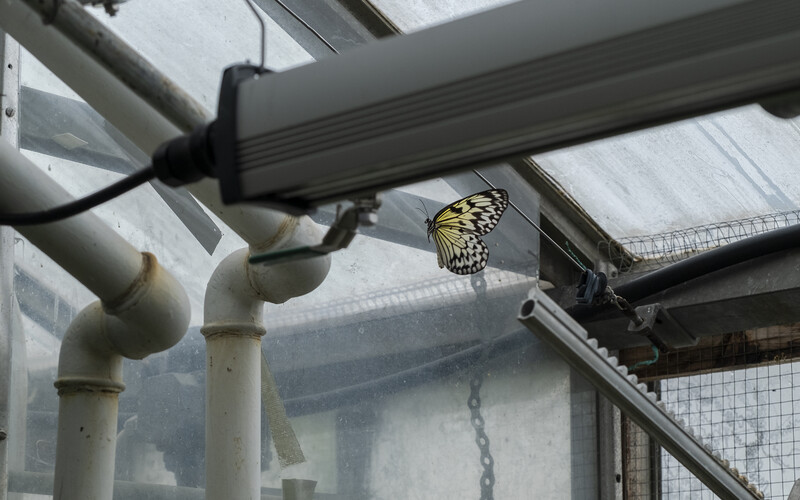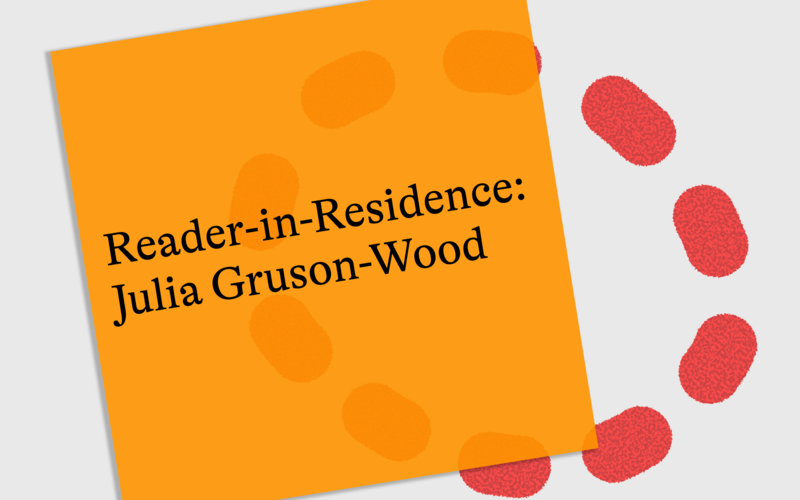- Info
How to Read the Reader
- May 28, 2025
Learning Otherwise: Embodiment, Language, and Crip Temporalities in RA Walden’s Practice
- Feb 14, 2025
The Agency of Walking
- Jan 21, 2025
Groundwater
- Jun 25, 2024
QUIET PARADE: Precedent Projects
- Jun 18, 2024
Unearthing Stories: Tracy Qiu on Decolonizing Plant Narratives
- May 27, 2024
Resources and Research: Overseeding
- Mar 28, 2024
The Blackwood Index on Campus
- Feb 26, 2024
Building Interrelationships through Interpretive Text
- Feb 07, 2024
Listening is Our Ongoing Score
- Dec 06, 2023
To resist, to empower, to heal
- Nov 20, 2023
Queer Orientations for Future Worldmaking
- Nov 02, 2023
“The sex ed we have as teenagers is precarious”: A timely conversation between Lorena Wolffer and Kira Sosa Wolffer
- Oct 27, 2023
Readings and Resources on Palestine
- Oct 20, 2023
Difficult Art
- Jul 13, 2023
Gestures Toward the Miraculous: A Q&A with Erika DeFreitas
- Jul 06, 2023
“A toast! to you”: Create Your Own Meal of Choices
- May 30, 2023
Sense Encounters
- May 16, 2023
What brings you here? SDUK Readership Survey
- May 05, 2023
Here, Better, Now: Connections
- Apr 06, 2023
Here, Better, Now: Foundations
- More…
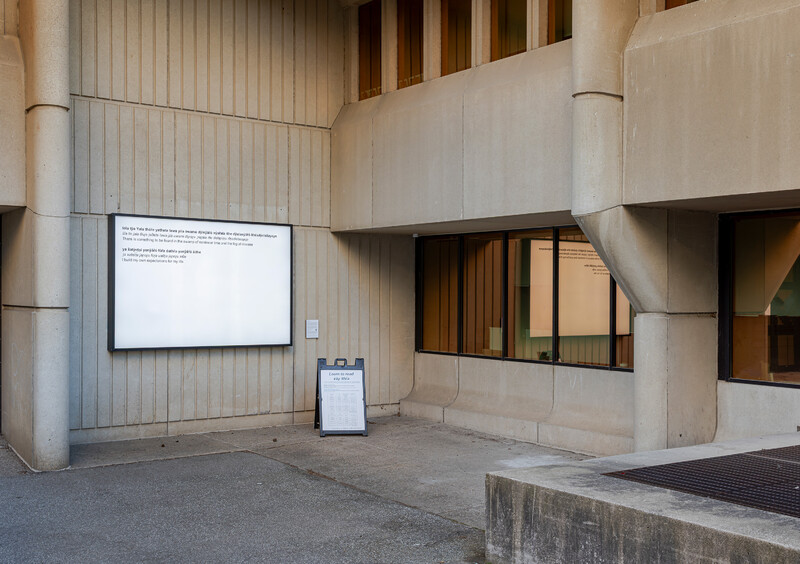
How does language structure the modes and transmissions of communication? And how might we interrupt these signals—recasting them in non-linear, recursive, and embodied ways?
These questions sit at the core of RA Walden’s artistic practice, particularly in access points and alternative states of matter(ing) and ẍây ithřa: a pledge, two works included in In A Manner of Speaking, exhibited on the Blackwood’s campus lightboxes. Rather than operating solely as images, these installations invited viewers into a spatial and temporal encounter with language—one that is felt as much as it is read or heard. In doing so, Walden expands the possibilities of communication beyond fixed systems of syntax or exchange.
Walden’s work gestures toward alternative modes of perception and consumption—ones that resist the linear, extractive, and commodified logics underpinning dominant systems of language and media. In their 2021 Artists-in-Presidents Transmission, they urge a relation that bleeds beyond the human: “spend some time with the bugs in the dirt baths / keep watch on the swamp from the knees”1—the language itself embodies other modes of seeing and relation, and considers living beings, beyond the human as part of an active queering and questioning of human planetary dominance.
Through literary, sculptural, and embodied strategies, Walden interrogates how both the body and language may be reconstituted within frameworks that evade capitalist desire. Their installations and texts challenge the structures through which oral, written, and performed communication typically occur, foregrounding instead the values of slowness, repetition, rhythm, and return. These are not simply aesthetic choices, but rather active strategies for engaging differently with the world—a way of learning and being that is iterative, open-ended, and materially grounded. They remind us that there is “something to be found in the swamp of nonlinear time and the fog of disease.”2
Walden’s works do not offer an escapist fantasy or utopian elsewhere. Instead, they function as pedagogical spaces—propositions for how we might dwell within and alongside language differently. This is inherent to a viewer’s encounter with the lightboxes: like a blackboard, they become a platform of teaching and learning. Walden’s installations act as sites of instruction and inquiry, reconfiguring how comprehension might occur through sensory, temporal, and spatial registers. In this way, they also raise critical questions about the conditions under which learning takes place. ẍây ithřa: a pledge presents a series of statements written and translated from Walden’s bespoke language, providing the viewer with a type of manifesto on living alongside the body—situating a respective subject-hood to a carrier “body” and its author “I.” This detachment displays care as happening on many planes and sites of existence. Their work gestures towards other geographies such as “community” or “inside,” with the spatiality of these existences defined through their multiplicities in definition rather than confined by single use. Happening and site then become ways to read time through Walden’s practice as a quality that is malleable. A past is situated as that which makes one’s presence/present, and future becomes the circumstances under which another presence/present can be located. Scholar Ellen Samuels asserts illness and disability as powerful avenues for reframing normative time and the body:
“Crip time is time travel. Disability and illness have the power to extract us from linear, progressive time with its normative life stages and cast us into a wormhole of backward and forward acceleration, jerky stops and starts, tedious intervals and abrupt endings.”3
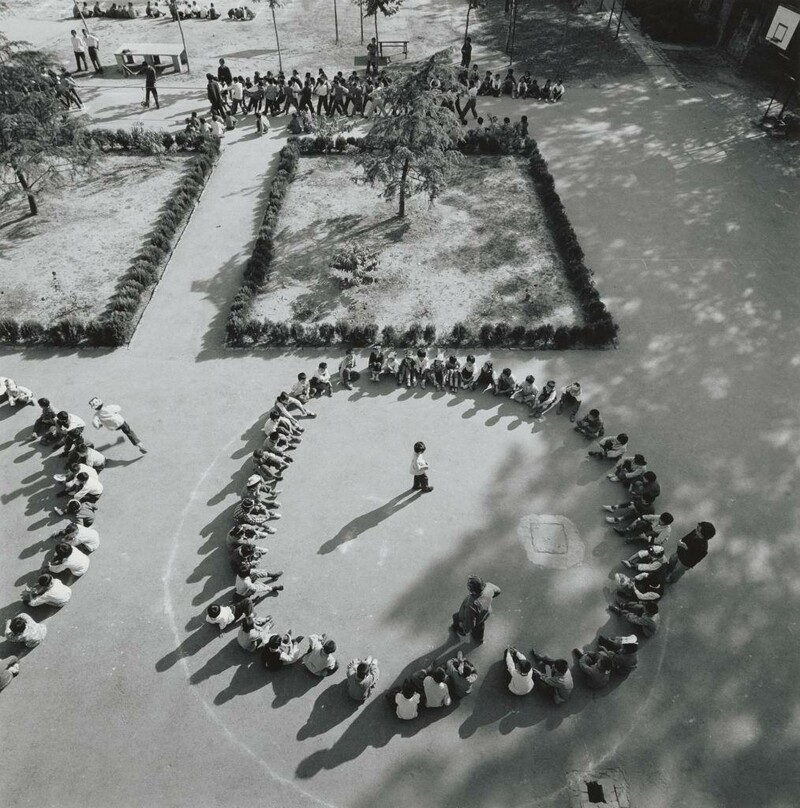
Volkerding's image prompts the question: where can we locate sites of learning? What does learning look like in unfamiliar contexts?
Regarding learning, then, as ongoing enables a consideration of these images as site or school at (rather than of) thought. As an institution engaged in expanding and rethinking pedagogies, we might return to the Greek etymology of the word school—schole—which presents school as an act of leisure, contemplation, and the affordance of time for reflection.4 With these etymological logics and Walden’s recursive systems, viewers are asked not only to understand learning as ever-happening, but to recognize care and harm as equal constants. It is only through this arrangement of methods to describe them that Walden presents us with the tools to address, understand, and see modes of being as being many, and being always.
It is also through this work that the viewer’s relationship to productivity and logic is called into question. In access points and alternative states of matter(ing), Walden re-imagines the vital elements for life through their electron configuration. It is through this appropriated language of “fact” that Walden works through effects of fiction and trace. Trace is treated as a semiotic of have-been, or visitation—as Walden describes in the context of illness. This relationship to landscape, and specifically the “naturalized” site, not only points to the relationships between non-human and human, but also to growth, death, and care as modes of labour. The language of fiction is foregrounded as a mode to think of the unknown within the context of illness and body, as illness becomes and arises through various planes of visibility.
Within these frames of language, Walden’s illuminated work asks us not just to decode or interpret, but to linger and dwell. They suggest that rest—conceptual, bodily, intellectual—is not the opposite of labour but a mode of practice. It is a form of attention that must be cultivated, protected, and valued as a vital part of thinking and feeling in the world. Through literary, visual, and spatial means, Walden offers not only a speculative vocabulary for alternative states of presence, but also a lived poetics of care, attention, and resistance—one that insists on the possibility of learning, living, and meaning otherwise.
SDUK Broadsheet
- SDUK Broadsheet
- 15
- 14
- 13
- 12
- 11
- 10
- 9
- 8
- 7.2
- 7.1
- 6
- 5
- 4
- 3
- 2
- 1
- 0
SDUK15: CONFIDING
This milestone fifteenth issue, CONFIDING, addresses trust and collaboration: the tools, methods, and strategies collaborators use to build mutual confidence while working together. With an international slate of largely co-authored contributions, this issue models forms of experimental and collaborative authorship through letters, exercises, interviews, oral histories, and more.
Contributors: Tasha Beeds, Elspeth Brown, Quill Christie-Peters, Tonatiuh López, Performance RAR (Agung Eko Sutrisno, Muhammad Gerly, Agesna Johdan, Bagong Julianto), The Post Film Collective (Marcus Bergner, Sawsan Maher, Mirra Markhaëva, Robin Vanbesien, Elli Vassalou), Vania Gonzalvez Rodriguez, Heather Kai Smith, Alisha Stranges, Michelle Sylliboy, quori theodor, Ilya Vidrin, Jess Watkin

The Blackwood
University of Toronto Mississauga
3359 Mississauga Road
Mississauga, ON L5L 1C6
[email protected]
(905) 828-3789
The galleries are open. Hours of operation: Monday–Saturday, 12–5pm.
Facebook | Twitter | Instagram
Sign up to receive our newsletter.
The Blackwood is situated on the Territory of the Mississaugas of the Credit, Seneca, and Huron-Wendat.
